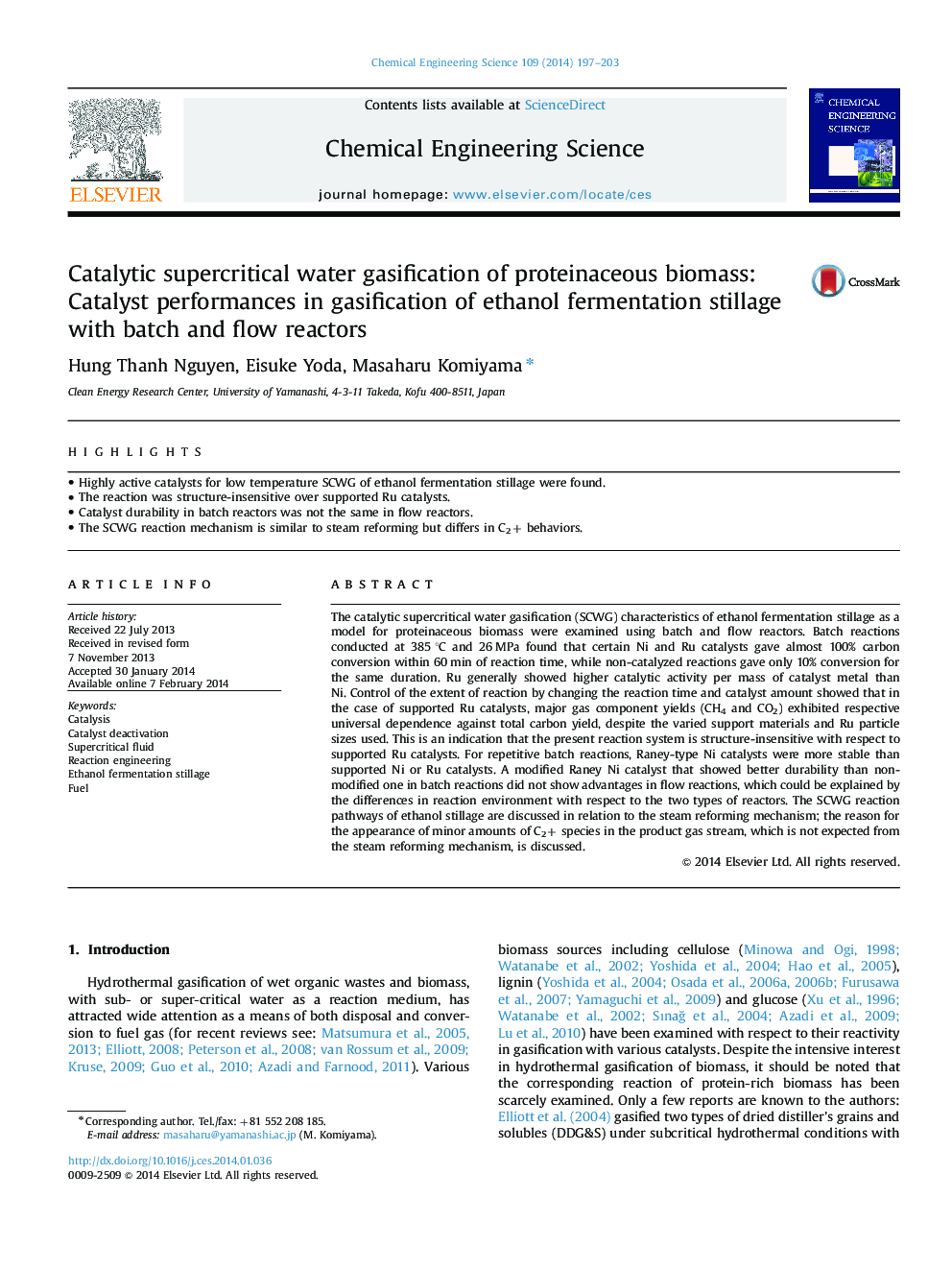| کد مقاله | کد نشریه | سال انتشار | مقاله انگلیسی | نسخه تمام متن |
|---|---|---|---|---|
| 154893 | 456873 | 2014 | 7 صفحه PDF | دانلود رایگان |
• Highly active catalysts for low temperature SCWG of ethanol fermentation stillage were found.
• The reaction was structure-insensitive over supported Ru catalysts.
• Catalyst durability in batch reactors was not the same in flow reactors.
• The SCWG reaction mechanism is similar to steam reforming but differs in C2+ behaviors.
The catalytic supercritical water gasification (SCWG) characteristics of ethanol fermentation stillage as a model for proteinaceous biomass were examined using batch and flow reactors. Batch reactions conducted at 385 °C and 26 MPa found that certain Ni and Ru catalysts gave almost 100% carbon conversion within 60 min of reaction time, while non-catalyzed reactions gave only 10% conversion for the same duration. Ru generally showed higher catalytic activity per mass of catalyst metal than Ni. Control of the extent of reaction by changing the reaction time and catalyst amount showed that in the case of supported Ru catalysts, major gas component yields (CH4 and CO2) exhibited respective universal dependence against total carbon yield, despite the varied support materials and Ru particle sizes used. This is an indication that the present reaction system is structure-insensitive with respect to supported Ru catalysts. For repetitive batch reactions, Raney-type Ni catalysts were more stable than supported Ni or Ru catalysts. A modified Raney Ni catalyst that showed better durability than non-modified one in batch reactions did not show advantages in flow reactions, which could be explained by the differences in reaction environment with respect to the two types of reactors. The SCWG reaction pathways of ethanol stillage are discussed in relation to the steam reforming mechanism; the reason for the appearance of minor amounts of C2+ species in the product gas stream, which is not expected from the steam reforming mechanism, is discussed.
Journal: Chemical Engineering Science - Volume 109, 19 April 2014, Pages 197–203
